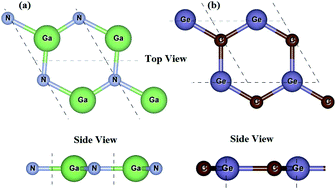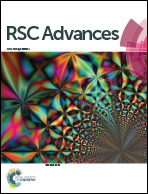Electronic structure, optoelectronic properties and enhanced photocatalytic response of GaN–GeC van der Waals heterostructures: a first principles study
Abstract
In this work, we systematically studied the electronic structure and optical characteristics of van der Waals (vdW) heterostructure composed of a single layer of GaN and GeC using first principles calculations. The GaN–GeC vdW heterostructure exhibits indirect band gap semiconductor properties and possesses type-II energy band arrangement, which will help the separation of photogenerated carriers and extend their lifetime. In addition, the band edge positions of the GaN–GeC heterostructure meet both the requirements of water oxidation and reduction energy, indicating that the photocatalysts have the potential for water decomposition. The GaN–GeC heterostructure shows obvious absorption peaks in the visible region, leading to the efficient use of solar energy. Tensile and compressive strains of up to 10% are also proposed. Tensile strain leads to an increase in the blue shift of optical absorption, whereas a red shift is observed in the case of the compressive strain. These fascinating characteristics make the GaN–GeC vdW heterostructure a highly effective photocatalyst for water splitting.



 Please wait while we load your content...
Please wait while we load your content...